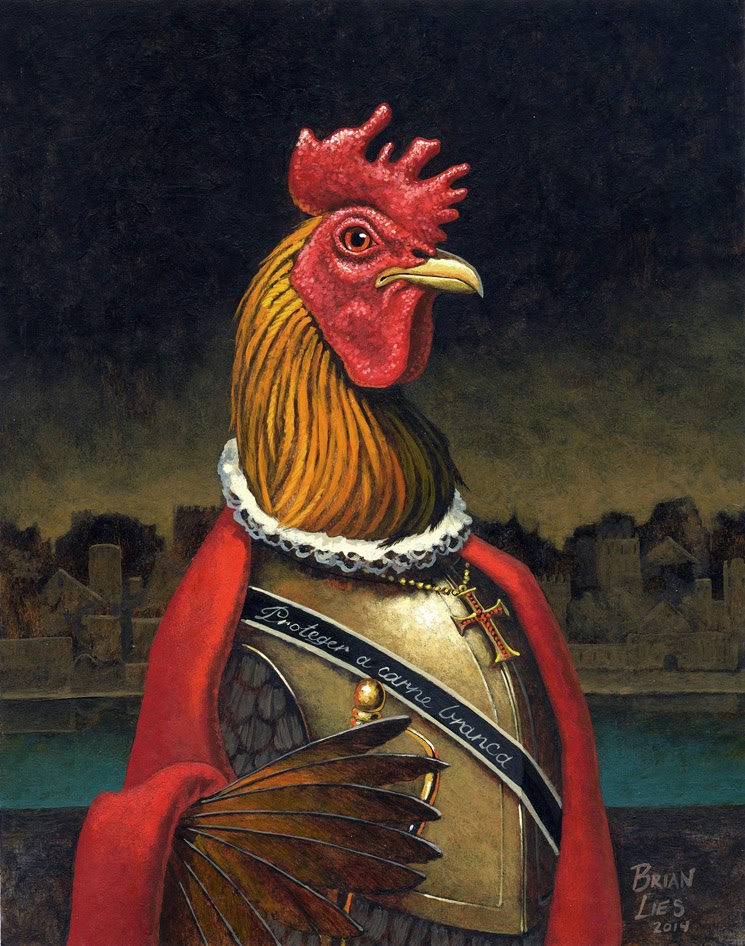First, a confession: this week hasn't gone as I expected it to go. I needed to finish sketches for another project I'm working on, and had some interesting stuff happen with an adult book my wife and I have coming out in September (more on that later). My children's book critique group met on Wednesday. And so here it is, Friday, and I don't have my finished painting for this blog, as originally promised.
I'm new to blogging, and maybe I'll have to readjust to doing a sketch one week, and a finish the next. Life rarely goes as you expect it to.
So, instead of posting the finish today, I'll post some reflections on revisions, and some work-in-process images. I'm off to visit some schools in Pennsylvania, so it'll be next Friday at earliest before I'll be able to post the finish of Richard at his desk.
Revisions.
An illustrator has to be flexible in terms of art direction
and editorial comment. Sometimes
we want to dig in our heels and fight for something we really want, and
sometimes, as in the writing cliché, (Faulkner? Sir Arthur Quiller-Couch?) we have to “kill our darlings.”
When I invited folks to comment on my sketches here, I was
surprised by the kind of comments I got.
First was that I should make the head of “Richard,” the dog
here, larger. My impulse is to not do that, because in my mind, Richard is perhaps in
third grade, which would likely make him eight years old, which would be. . .
oh, 1 1/7 in dog years. And I
didn’t intend for him to be truly a puppy. My gut feeling is that he’s at the start of that awkward
not-a-little-boy-anymore, not-yet-smelling-bad phase. So I’m choosing to not “down-age” him.
Second comment was Richard’s pencil grip, which one reader
pointed out made him look like his paw had been stabbed. I’d mentioned something about his
pencil grip myself, so I knew that was something that I was going to need to
fix. Here's Richard with a re-sketched paw, with a new pencil grip. I can't imagine his writing is going to be very neat! I've also added a rough shape for his tail, and suggestions of a blackboard behind him.
One comment caught me by surprise, but reinforced what I’ve always believed as an illustrator: there is always someone who is more
of an expert than you are, and you need to do your research.
“The ‘R’ in ‘Richard’ is incorrect.”
It’s been a geological age since I
learned cursive, and my own writing has devolved into a mix of cursive small
letters and printed capitals. I’d
drawn a “fancy” R, not thinking about the audience of educators who might
eventually see the drawing. And,
as the reader pointed out, the teacher would have made the name signs in
Richard’s classroom. So if this
drawing were intended for a school audience, that tiny detail, that “R,” would
stick out as wrong. Our eyes pick up on that kind of
thing. And that decreases the
reader’s faith in the authority of the narrative voice.
So: research.
The below is thanks to ( http://www.gmbservices.ca/Jr/Handwriting.htm ), proper strokes for a capital “R” :
Another comment was a question: how are you going to show he’s thinking of Legos?
Actually, I plan to not
show any Legos. One thing I’ve
learned is to let the reader do some of the heavy lifting. If you spell everything out for a
reader, then there’s no mystery.
Part of the magic of reading is that we bring our own lives to the
stories we read, and so every person’s version of a story is different, and personal. And
that’s one reason the movie version of a book is nearly always worse—it’s been
flattened down to the version of what the people who made the movie imagined, or thought
we wanted to see. Most people have
seen a movie of a book and thought, “that’s not how I saw it!”
So Richard thinking of
his Legos will bring different images to different people. Me? I picture just square and rectangular pieces, mostly red and
white. A young person now would
likely think of all of the different modules of Legos available (such as Star Wars), which have turned
Legos into something nobody over 40 would recognize. So by not showing
anything Lego related, the image becomes more universal than it would if I
created a thought balloon, or painted a background of brick shapes. Sometimes the best decision is what not to show.
Here are several process images as I work on Richard at his desk:
First, I cover the image area with a tone, usually burnt sienna and burnt umber. This "kills" the white of the page, seals the paper so my acrylics handle better, and begin to set up the lights and darks of the piece.
Next, I filled in the blackboard area behind the character, which helped define his shape and started to give me clues as to the lighting in the final piece.
Here, I've painted in the desk and have begun modeling Richard's face. At this point, he's looking very foxy, and not husky/wolfish. That will change as I bring light into his chin area, making that bigger and heavier, and as I even out the color and highlights in his upper face.
More when he's finished!


















